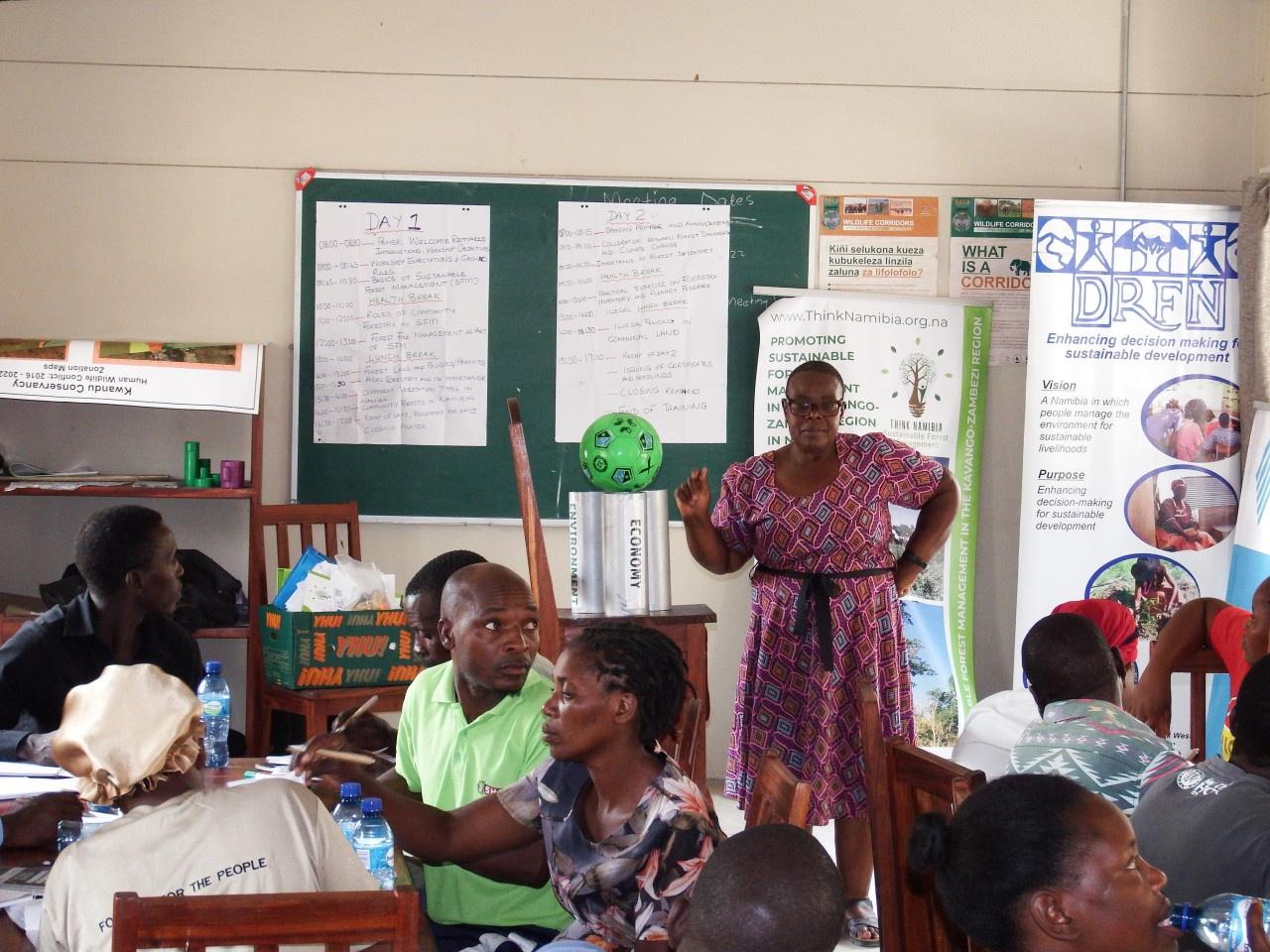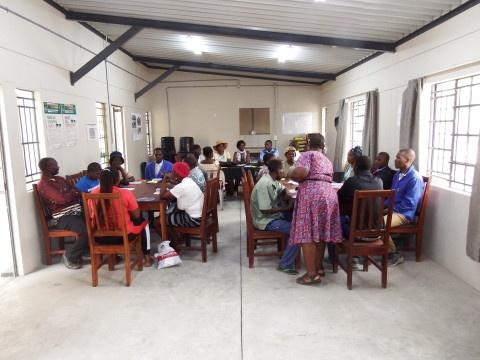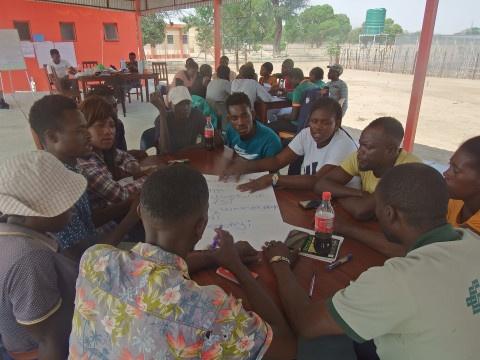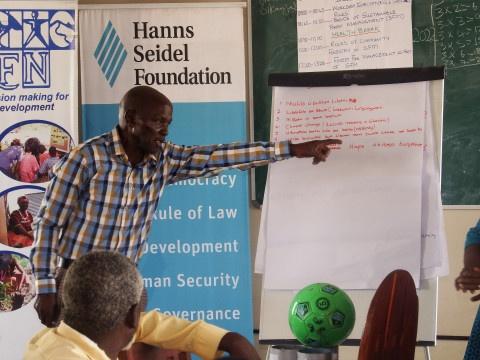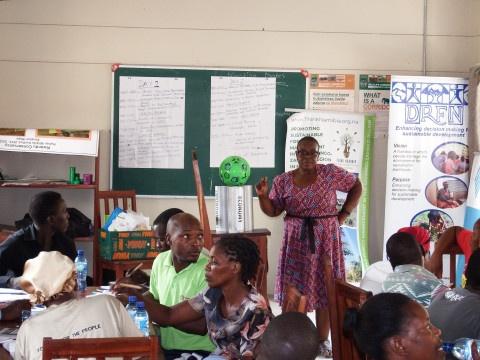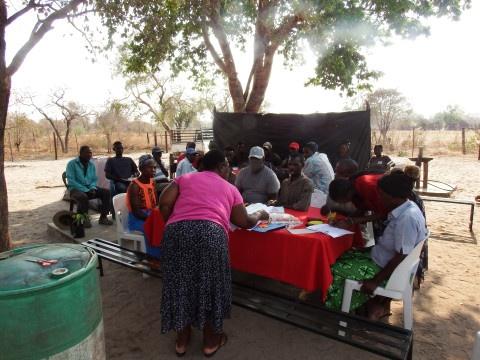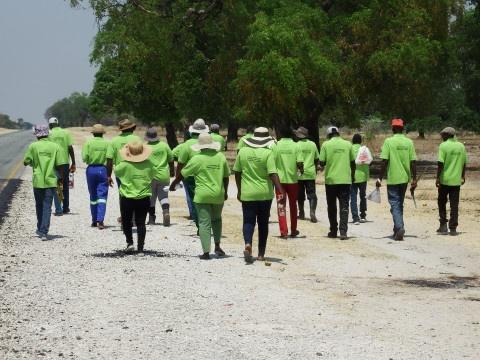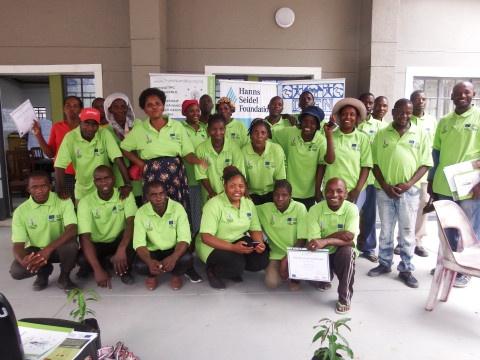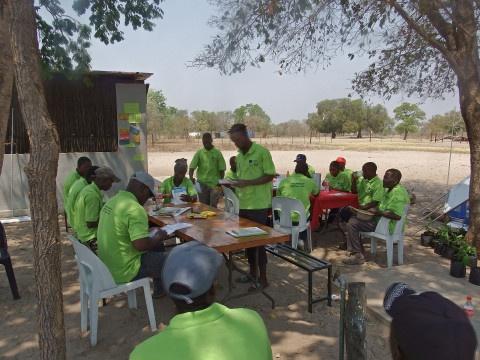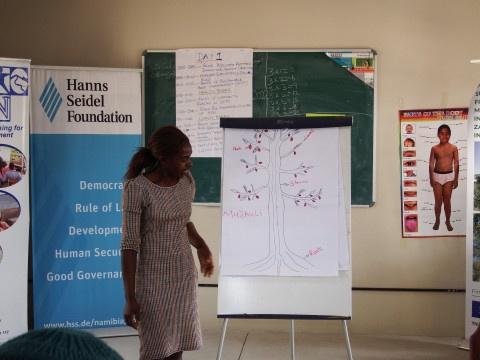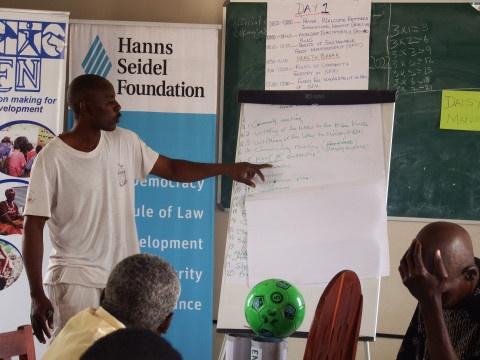Another Six Community Forests trained on Sustainable Forest Management
From 03 October to 21 October 2022, the ‘Promoting Sustainable Forest Management in the Kavango-Zambezi-Region in Namibia’ (NSFM) Project had gone for three long weeks in the field to train the members of six Community Forests in Zambezi, Kavango East as well as Kavango West Region on Sustainable Forest Management. These two-day long workshops/ trainings aimed at equipping members of Community Forests with the necessary skills and knowledge to strengthen their capability to apply the concept of Sustainable Forest Management in the management of their forests. The six Community Forests that have received training included Ncamagoro and Ncumcara Community Forests in Kavango West Region, Kapinga Kamwalye Community Forest in Kavango East Region, as well as Kwandu, Masida and Sikanjabuka Community Forests in Zambezi Region.
After starting day one with the official opening, including prayer, welcoming remarks, introduction, participants’ expectations and ground rules, the trainer introduced the three pillars of Sustainable Forest Management. But first, the participants were broken into three groups for a warming-up exercise. Each group was given a topic to discuss in their groups and write their answers on a flip chart paper. The topics were as follows: Group 1: List of trees found in their CF; Group 2: Uses of trees in general; Group 3: Was asked to draw a tree of choice, label its part and their uses. The reason for this warming-up exercise was to make the participants appreciate the importance of trees considering the number of tree names found in their CF and their uses in their daily lives.
After that exercise, the three pillars of SFM were discussed at length as this is the backbone of SFM. An illustration was done by the trainer using pipes on which were written ‘Environment’, ‘Social’, and ‘Economy’. These pipes referred to the three pillars of SFM, and a soccer ball referred to as the forest. The illustration helped the participants to understand that without managing sustainably their forests they will not benefit from the three pillars.
For the next topic which followed, the participants have divided again into three groups. They had to write the roles of Community Forests in Sustainable Forest Management, and discussions were done thereafter in the plenary session. Discussions continued with the subject ‘Woodland of Namibia’. Most of the participants were only familiar with Savannah Woodland and were grateful to learn more about the woodlands of Namibia as well as check on the Namibian map. Then, ‘Deforestation and Climate Change’ was the subject. After discussing the causes and effects of deforestation and reasons to avoid deforestation, the participants appreciated the link between deforestation and the need to practice Sustainable Forest Management.
The issue of illegal fencing was discussed at the end of day one but without giving more emphasis as the Community Forests trained are not experiencing major challenges at the moment or received training from the Legal Assitance Centre (LAC) recently. After the discussion, handouts of the summarised communal land act from the LAC were distributed to the participants.
Day two of the workshops commenced with a recap of the subjects learned on the first day. The trainer asked questions and picked the participants randomly to answer the questions. After the recap of the first day, the topics 'Correlation between Deforestation, Forest Degradation and Climate Change’, ‘Different Sustainable Harvesting Methods', 'Agroforestry’, ‘Forestry Laws and Policies’, and ‘The Importance of Forest Inventories’ with a practical session in the near forest were dealt with.
The topic 'Forest Inventory' was conducted in the morning to avoid too much heat and participants were taken for a practical session by going into the nearest forest to practice how inventory is carried out. Then, a discussion on the importance of why inventory is conducted took place. The participants were informed that inventory is one of the criteria for the gazettement of a Community Forest. The exercise was appreciated by the participants as they always hear the word ‘inventory’, but most were not sure of its importance. They also mentioned that they usually heard people from the Ministry of Lands talking about GPS and were not sure what it was. When they were been taken through the tools used for an inventory, they were happy to see it and be able to use it.
After the inventory exercise, they were asked to write lists of trees and their uses in groups which they had recorded in the forests. The participants were asked to categorise the trees according to the three pillars of Sustainable Forest Management. At the end of the exercise, the participants realised their forest contained a wealth of trees that they never realised. This gave them the urge to manage their forests in the future.
The importance of agroforestry was discussed in the class whereby the trainer drew a diagram that showed its meaning. Most classes mentioned that they grow trees around their homesteads especially fruit and medicinal trees for fruits and shade.
Furthermore, fire management as part of Sustainable Forest Management was introduced to the participants, and it was a topic that brought interest and attention to most participants. This topic was also highlighted by most participants during the introductory on their workshop expectations cards. The causes, advantages and disadvantages of fire were discussed in groups and reported in plenary. The groups were conversant on ways of avoiding forest fires in their forests which included carrying out community awareness meetings, erecting fire breaks, early burning, and many more. The participants were happy to hear that fire was not a bad tool if it’s controlled, especially to destroy ticks and improve grazing pastures during early burning.
The afternoon session commenced with an exam that covered all topics covered during the last one and a half days.
The workshops in the Community Forests concluded with a hand-over of certificates and tree seedlings. Especially the distribution of tree seedlings aims to remember each participant of their daily responsibilities in Sustainable Forest Management
When you subscribe to the blog, we will send you an e-mail when there are new updates on the site so you wouldn't miss them.
